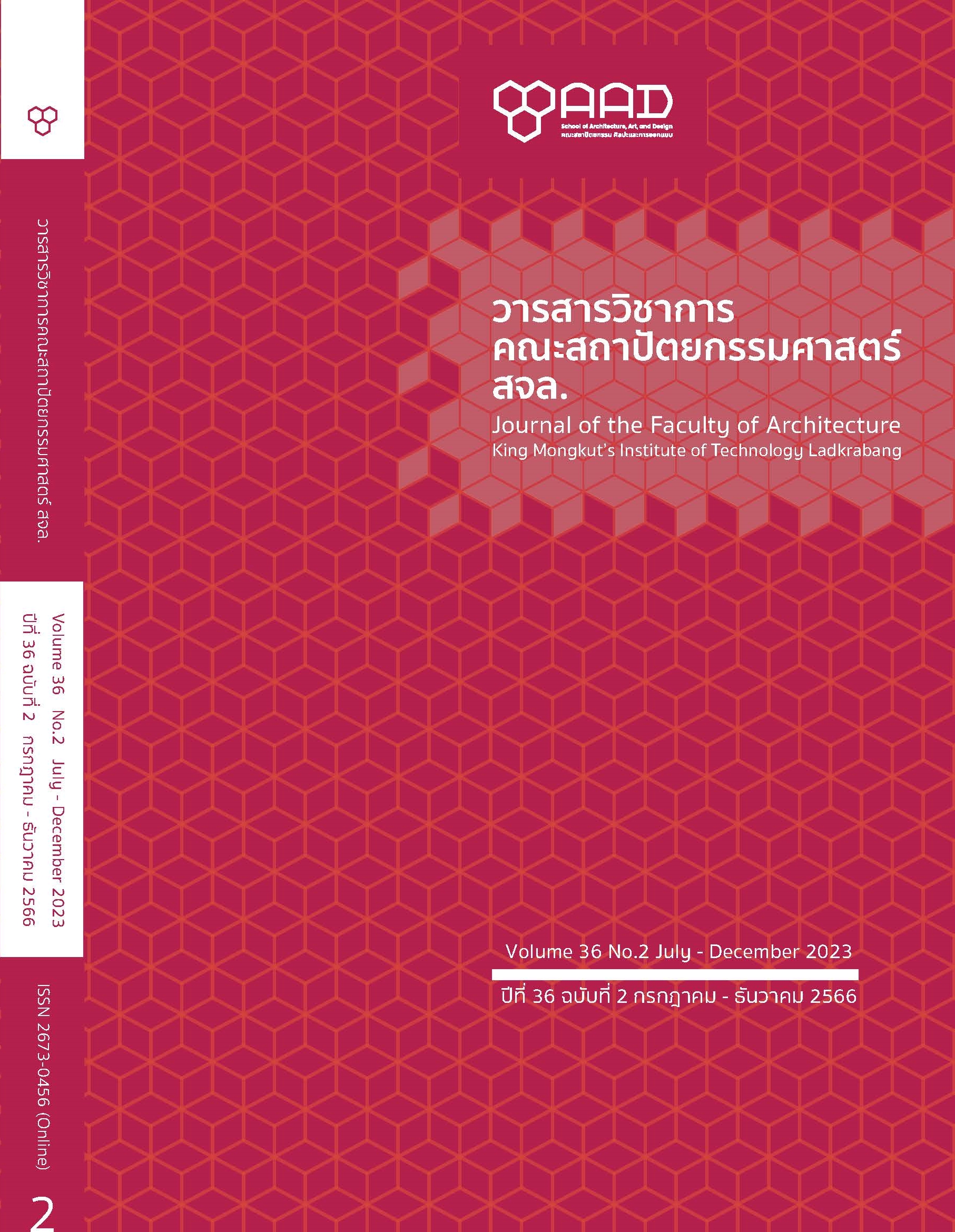Studying The Effective of Mascot Coco in Representing The Brand Personality of King Mongkut’s Institute of Technology Ladkrabang
Main Article Content
Abstract
The purpose of this research was to study the efficiency of the mascot, Coco, in representing the brand personality of King Mongkut’s Institute of Technology Ladkrabang. Using the brand archetypes personality approach, the researcher conducted a focus group interview with four key informants to determine the brand personality of King Mongkut’s Institute of Technology Ladkrabang. The researcher then used survey research to collect data from 463 respondents, comprising staff and students.
These are the results of studying the effectiveness of mascot Coco in representing six brand personalities of King Mongkut’s Institute of Technology Ladkrabang: Coco cannot represent the Sage personality (M = 3.14, S.D. = 1.15). Coco is effective in representing the Hero personality (M = 3.65, S.D. = 1.13). Coco cannot represent the Creator personality (M = 3.16, S.D. = 1.11). Coco is effective in representing the Caregiver personality (M = 3.62, S.D. = 1.16). Coco is effective in representing the Everyman personality (M = 3.7, S.D. = 1.06). Coco cannot represent the Rebel personality (M = 3.21, S.D. = 1.14).
Article Details

This work is licensed under a Creative Commons Attribution-NonCommercial-NoDerivatives 4.0 International License.
This work is licensed under a Creative Commons Attribution-NonCommercial-ShareAlike 4.0 International License.
Copyright Transfer Statement
The copyright of this article is transferred to Journal of The Faculty of Architecture King Mongkut's Institute of Technology Ladkrabang with effect if and when the article is accepted for publication. The copyright transfer covers the exclusive right to reproduce and distribute the article, including reprints, translations, photographic reproductions, electronic form (offline, online) or any other reproductions of similar nature.
The author warrants that this contribution is original and that he/she has full power to make this grant. The author signs for and accepts responsibility for releasing this material on behalf of any and all co-authors.
References
Boonnak, M. (2011). Statistics for research and decision making: Techniques for data analysis and explanation of results (8th ed.).
Chulalongkorn University Press. (in Thai)
Brown, S. (2014). Animal house: Brand mascots, mascot brands and more besides. Journal of customer behaviour, 13(2), 77-92. https://doi.org/10.1362/147539214X14024779483519
Cayla, J. (2013). Brand mascots as organisational totems. Journal of Marketing Management, 29(1-2), 86-104. https://doi.org/10.1080/0267257X.2012.759991
Chaiyajan, T. (2020). Symbolic interaction theory to mascot design: Case study of the Faculty of Fine Art and Industrial Design RMUT. Parichart Journal Thaksin University, 34(1), 230-251. (in Thai)
Chanthaplaboon, T., & Srirattanamongkol, S. (2015). Study and mascot design for a university in Nakhorn Pathom province. Christian University of Thailand Journal, 21(1), 99-109. (in Thai)
Cohen, R. J. (2014). Brand personification: Introduction and overview. Psychology & Marketing, 31(1), 1-30. https://doi.org/10.1002/mar.20671
Faber, M. A., & Mayer, J. D. (2009). Resonance to archetypes in media: There’s some accounting for taste. Journal of Research in Personality, 43(3), 307-322. https://doi.org/10.1016/j.jrp.2008.11.003
Hoolwerff, D. (2014). Does your mascot match your brand's personality? [Master thesis communication science, University of Twente].
iNN News. (2021, July 15). “Buddy B” The fellow mascot of Benchachinda people: A great strategy to build a brand within the
organization. https://www.innnews.co.th/news/news_145160/ (in Thai)
Jennifer L Aaker. (1997). Dimensions of brand personality. Journal of Marketing Research, 34(3), 347-356. https://doi.org/10.2307/3151897
Judson, K. M., Aurand, T. W., Gorchels, L., & Gordon, G. L. (2008). Building a university brand from within: University administrators' perspectives of internal branding. Services Marketing Quarterly, 30(1), 54-68. https://doi.org/10.1080/15332960802467722
KMITL. (2016). KMITL Vision and Strategy. https://www.kmitl.ac.th/th/node/570 (in Thai)
KMITL, Human Resource. (2022). Human Resource Management and Devlopment Strategic Plan 2023-2026. (in Thai)
Mark, M., & Pearson, C. (2001). The hero and the outlaw: Building extraordinary brands through the power of archetypes. McGraw-Hill.
Pairoa, I., & Arunrangsiwed, P. (2016). An overview on the effectiveness of brand mascot and celebrity endorsement. International Scholarly and Scientific Research & Innovation, 10(12), 3536-3542. https://doi.org/10.5281/zenodo.1127545
Patterson, A., Khogeer, Y., & Hodgson, J. (2013). How to create an influential anthropomorphic mascot: Literary musings on marketing, make-believe, and meerkats. Journal of Marketing Management, 29(1-2), 69-85. https://doi.org/10.1080/0267257X.2012.759992
Patterson, C. A., Beach, D. M., Reyes, J. M., & Sloan, S. M. (2021). Stakeholder perceptions and experiences of a college live mascot program: a study of higher education ad hoc change. Innovative Higher Education, 46, 377–392. https://doi.org/10.1007/s10755-021-09547-9
Poksupphiboon, A., & Srikanlayanabuth, A. (2020). The guidelines for design kawaii local characters and mascots. Institute of Culture and Arts Journal, 123-165. (in Thai)
Prueangphong, P., & Disakul Na Ayudhya, U.-E. (2016). Mascot design for chiangmai cultural events. Journal of Fine and Applied Arts Chulalongkorn University, 2(2), 59-68. (in Thai)
Punjard, N. (2018). An Exploratory Factor Analysis of Brand Personality of Thai Universities. Journal of public relations and advertising, 11(2), 77-93. (in Thai)
Rauschnabel, P. A., Krey, N., Babin, B. J., & Ivens, B. S. (2016). Brand management in higher education: The university brand personality scale. Journal of Business Research, 69(8), 1-10. https://doi.org/10.1016/j.jbusres.2016.01.023
Rungvimolsin, R., & Vungsuntitum, S. (2019). Media exposure, engagement with trade character and brand loyalty. Journal of Public Relations and Advertising, 12(2), 49-62. (in Thai)
Satyagraha, A., & Mahatmi, N. (2018). Study of mascot design character as part of city branding: Malang city. ULTIMART Jurnal Komunikasi Visual, 11(2), 7-15. https://doi.org/10.31937/ultimart.v11i2.1019
Sevier, R. A. (2001). Brand as relevance. Journal of Marketing for Higher Education, 10(3), 77-97. https://doi.org/10.1300/J050v10n03_05
Simkus, J. (2022, January 7). Quota sampling: Definition, method and examples. https://www.simplypsychology.org/quota-sampling.html
Sookpatdhee, T. (2016). The mascots concept design to promote the image of the city tourism of Japan. Payap University Journal, 26(2), 17-31. (in Thai)
Stephen Brown. (2010). Where the wild brands are: Some thoughts on anthropomorphic marketing. The Marketing Review, 10(3), 209-224. https://doi.org/10.1362/146934710X523078
Xara-Brasil, D., Hamza, K. M., & Marquina, P. (2018). The meaning of a brand? An archetypal approach. Revista de Gestão, 25(2), 142-159. https://doi.org/10.1108/REGE-02-2018-0029
Yadav, P. (2015). Anthropomorphic brand mascot serve as the vehicle to quickly remind customers who you are and what you stand for in indian cultural context [Conference]. ICCVAD, Paris.


